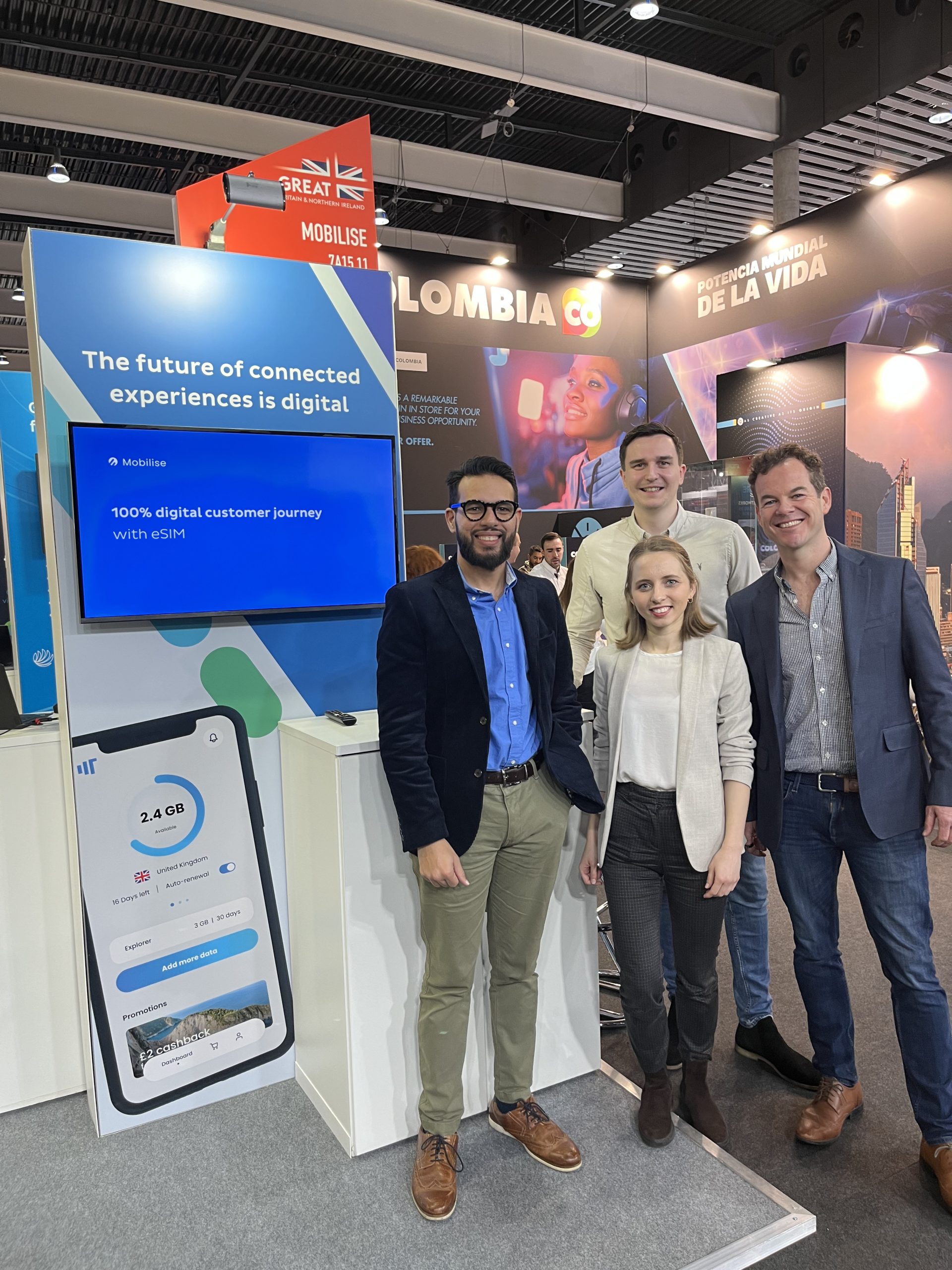The general consensus following this year’s Mobile World Congress (MWC) is in-person events are back. Finally returning to post-pandemic numbers of attendees and exhibitors, 2023 saw a fully-fledged MWC. With so much going on it was impossible for visitors to catch sight of everything, so we’ll share our key takeaways from the biggest connectivity event of the year.

With almost 30,000 more visitors than in 2022, the first post-pandemic edition of MWC buzzed with the hype about the latest gadgets, trends, and technologies. We saw Motorola revive its cult classic Razr model with a rollable phone concept. A sustainable mobile device from Nokia that users can repair themselves and a very suave hybrid-working vehicle interface from Mercedes-Benz and Cisco. To name but a few show-floor standouts. But there was another buzzword that wove its way through the halls of Fira Barcelona Gran Vía — frictionless.
Frictionless immersion
Travel anywhere across the show and you’d be sure to find a huge crowd around any demonstration of alternative reality (AR) or virtual reality (VR) technology. It does seem that these technologies are the future of consumer tech. But what was certainly prevalent at MWC, was how AR and VR can be combined for an elevated, mixed reality (XR) experience.
There were several key announcements from players across the immersive technology space. Notably, Oppo announced its mixed reality device — the second-generation Air Glass. What looks like a fairly standard pair of glasses actually includes a concealed, reflective display that overlays virtual elements on top of real life. Whether that’s the time, weather or a smartphone notification.
One of the most eye-catching demonstrations at the event was SK Telecom’s VR air taxi flight simulator. With a trailing queue to try it out at all times, the fight simulator required users to wear a VR headset that simulates how an urban air mobility system could work in the smart cities of the future, enabling passengers to fly between locations and reduce congestion.
While AR and VR headsets have dominated the gaming market for some years, new products like this show how technology is going to advance in the near future. It certainly shows a lot of promise outside of the gaming sector, as an additional way of providing a frictionless, immersive experience for consumers.
Frictionless customer experiences
Even compared to last year, the conversation around embedded SIMs (eSIMs) had grown. This isn’t a huge surprise since one of the show’s key themes was Digital Everything. Involving expanding digital technology to create value for every industry.
Driving awareness of the consumer eSIM has been a main goal of technology providers over the past few years, but there has been a noticeable shift in awareness recently. At the 2022 edition of MWC, the GSMA revealed that less than 30% of consumers were aware of eSIM. Since then, it certainly feels like mass consumer awareness has been reached. This will be, in part, down to some huge announcements over the past year, like Apple’s announcement of the iPhone 14 as eSIM-only in the US.
Now, most people know what an eSIM is and many have been offered them by their service provider. However, the main challenge for telcos is communicating and educating consumers of the benefits of adoption. This ties in with the theme of frictionless customer experience (CX). ESIM is a key driver of frictionless CX by facilitating instant, remote onboarding.
What became clear at MWC is that service providers have bought into this shift from physical cards and recognise the value that CX brings. Many stands referenced experience in some way, which showed an industry-wide level of recognition that offering a frictionless CX is the key to driving business value. With eSIM at the very heart of this.
Frictionless connectivity
A final key theme across many of the show’s exhibitors was ensuring 100% connectivity globally. A key to connecting traditionally hard-to-reach regions to enable frictionless coverage is the new phone-to-satellite messaging services, or direct-to-device (D2D).
This change in how satellite connectivity can be used has certainly brought a lot of hype. We first heard about this again, back in September, with the iPhone 14’s emergency SOS function. But MWC wasn’t short of its own satellite-related announcements.
Deutsche Telekom revealed plans to develop satellite-capable IoT services. VEON announced a partnership with satellite operator OneWeb to offer mobile connectivity in rural areas. Qualcomm announced smartphone brands Honour, Motorola, Oppo, Vivo and Xiaomi will all be offering seamless satellite communication capabilities. All through its Snapdragon Satellite platform.
Offering this sort of connectivity is a real game changer for connecting unconnected areas and bridging a worldwide digital divide. With several device manufacturers showing their support for the technology, it’s definitely an area to watch over the next few months.
If connectivity players take one thing away from this year’s MWC, it’s that frictionless processes are key. Whether that’s an individual product, a companywide process or an industrywide technological advancement. Consumers are craving and demanding frictionless service. And telecoms service providers are responsible for making it happen.
Mobilise supports organisations in launching digital-first service propositions, with excellent CX quickly, and easily through our SaaS solutions. If you’re looking to launch a frictionless connectivity service offering or want to elevate your existing solution, get in touch with the team here.



